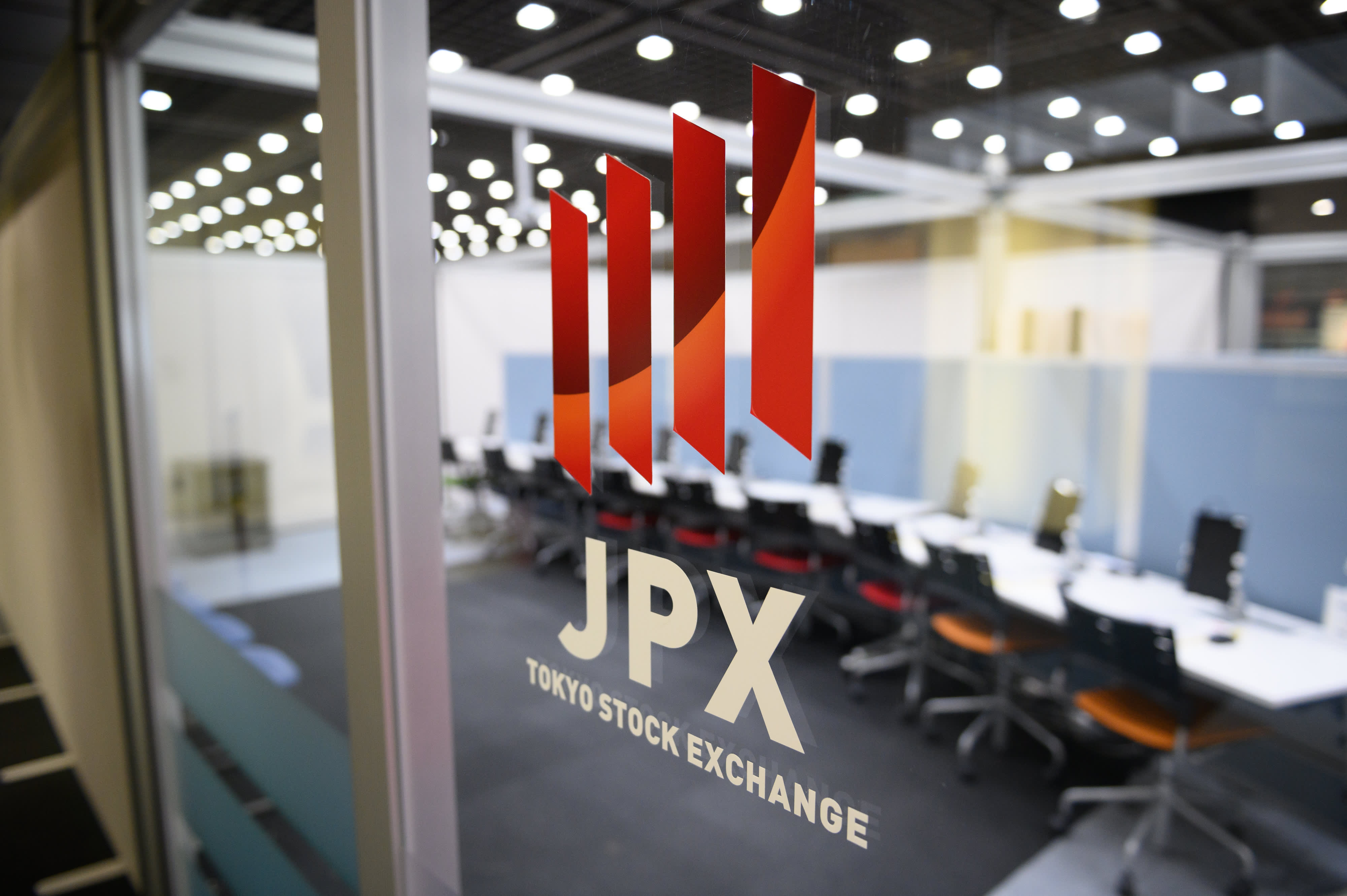
The logo of the Tokyo Stock Exchange (TSE), operated by Japan Exchange Group Inc. (JPX), is displayed at the bourse in Tokyo, Japan, on Friday, Oct. 2, 2020.
Akio Kon | Bloomberg via Getty Images
SINGAPORE — Asia-Pacific markets mostly traded lower on Monday as investors looked ahead to the U.S. Federal Reserve’s monetary policy meeting this week.
Japan’s Nikkei 225 declined 0.11% after retracing some of its earlier losses while the Topix index was down 0.18%. In South Korea, the Kospi was down 1.53% while Hong Kong’s Hang Seng index fell 0.92% shortly after market open.
Chinese mainland shares reversed earlier losses: The Shanghai composite rose 0.2% and the Shenzhen component added 0.56%.
In Australia, the ASX 200 fell 0.44%. The energy, materials and financial subindexes were down 0.71%, 1.42% and 0.48%, respectively as major banks, miners and oil stocks sold off. Commonwealth Bank shares, however, ticked higher 0.17%.
Indian shares also trended lower, with the Nifty 50 down 0.9% and the Sensex lower by 0.53%.
Last Friday, stocks sold off globally. Stateside, the tech-heavy Nasdaq Composite posted a 7.6% loss for the week, its worst since October 2020, and also more than 14% below its record close in November.
The Federal Open Market Committee is due to meet on Tuesday and Wednesday to decide on the next steps for U.S. monetary policy.
Rising inflation is a major concern for the U.S. central bank and investors will listen closely to hear how worried the Fed actually is — Chairman Jerome Powell is due to brief the media Wednesday afternoon local time after the FOMC releases its statement.
“Markets have been trading cautiously ahead of this week’s FOMC statement, which is expected to be hawkish and potentially outline the case for interest rate rises starting in March,” ANZ Research analysts wrote in a Monday morning note.
They said they are doubtful that the Fed would end quantitative easing this week as some in the market speculate.
“We are also doubtful that the Fed would begin to tighten policy with a 50bps rate rise. Markets may stabilise if the Fed is not as hawkish as some worst case fears suggest,” the ANZ analysts added.
Currencies and oil
In the currency market, the U.S. dollar traded 0.08% higher at 95.718 against a basket of its peers.
The Japanese yen changed hands at 113.88 per dollar, strengthening from levels above 114.8 in the previous week. The Australian dollar was little changed at $0.7179.
The onshore Chinese yuan traded at 6.3326 per dollar after the People’s Bank of China lifted the yuan midpoint fix to the strongest level since May 2018.
PBOC set the midpoint at 6.3411 yuan per dollar, 0.13% stronger than the previous fix of 6.3492, Reuters reported. The official guidance was largely in line with the market’s expectation of 6.3409, according to the news agency.
China allows the yuan to trade within a narrow band of 2% above or below the day’s midpoint rate. If it deviates too far, the Chinese central bank typically steps in to buy or sell the yuan, putting a lid on its daily volatility. This exchange rate is known as the onshore yuan, or CNY.
Oil prices rose Monday during Asian trading hours: U.S. crude was up 0.79% to $85.81 a barrel and global benchmark Brent rose 0.85% to $88.64.
Both U.S. crude and Brent rose for a fifth week in a row last week, gaining around 2% for the week, Reuters reported. Prices were up more than 10% this year due to supply concerns.
Source: CNBC
